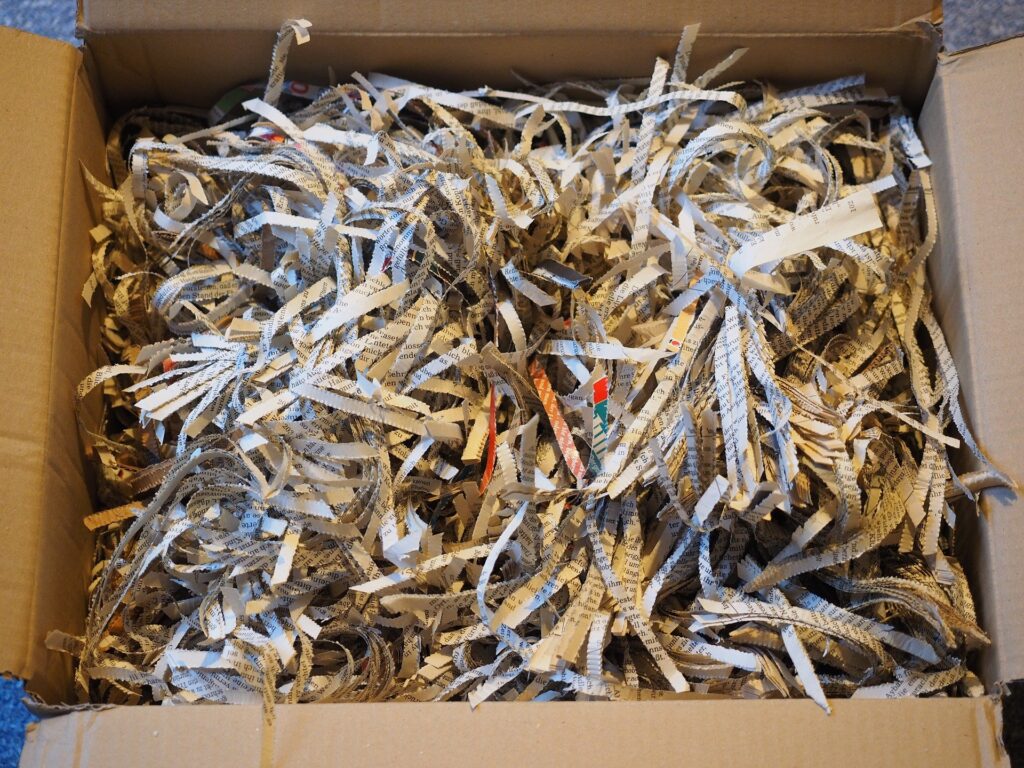Blog & newsroom
-

3 ways to create OpenPGP keys for file transfers
JSCAPE MFT Server makes it easy to strengthen secure file transfers with OpenPGP encryption. But before you can protect your files with…
Learn More
-

Video: Setting SFTP algorithms on your SFTP server
In this video, we’ll talk about the algorithms included in a typical SFTP server and explain their basic functions. We’ll cover algorithms…
Learn More
-

Video: How to get your MFT server to email you about last night’s download
A tutorial on how to configure JSCAPE MFT Server to email you about a recent download.
Learn More
-

Video: Generating a list of freshly downloaded files
A tutorial on how to configure JSCAPE MFT Server to generate a list of downloaded files.
Learn More
-

Video: How to delete a file on your server after it’s downloaded
Learn how to automatically delete files from your server as soon as it’s been downloaded
Learn More
-

Video: How to get an email each time an admin account logs in to your server
Demonstrates how to configure JSCAPE MFT Server so that it will email you each time an admin account logs in to your…
Learn More
-

Video guide to set up automatic downloads
A video tutorial demonstrating how to set up a scheduled automatic download with a trading partner.
Learn More
-

How to set up SFTP public key authentication
A video tutorial demonstrating how to set up sftp public key authentication between trading partners
Learn More
-

Streamline file transfer automation with trading partners
Streamline data exchanges and file transfer automation with trading partners through JSCAPE MFT Server Trading Partners
Learn More
-

Video: where to find JSCAPE MFT server information
These are the places where you can find help information when using JSCAPE MFT Server.
Learn More
-

Video: how to get your file transfer server email you a list of old files
A video tutorial demonstrating how to configure your server to email you a list of old files
Learn More
-

Video: how to configure your server to find and zip old files
In this video, we demonstrate how to configure JSCAPE MFT Server to monitor a directory for old files and then zip them.
Learn More
-

Video: how to configure your server to find and delete old files
This video demonstrates how to set up JSCAPE MFT Server to monitor a directory for 1 year-old files and then automatically delete…
Learn More
-

Video: Monitoring a directory for new files and automatically uploading to a SFTP server
Demonstrates how to configure JSCAPE MFT Server so that it monitors a directory for newly added files and then upload each file…
Learn More
-

Types of businesses that benefit from a MFT server
Overview There are good investments and there are great investments. A piece of software can be a great investment if it makes…
Learn More
-

How does china’s cybersecurity law impact data transfers?
Legislations that involve data protection or privacy always draw our attention because they often have implications to business transactions and file transfers.…
Learn More
-

Video: load balancing file transfer services
In today’s video, we’ll talk about the concepts behind Load Balancing File Transfer Services
Learn More
-

Active-Active vs. Active-Passive – high availability & load balancing
In today’s video, we’ll explain the difference between Active-Active vs. Active-Passive high availability (HA) clusters and achieving load balancing. If you want…
Learn More
-

Video: how to setup an SFTP server with JSCAPE
In this video, you’ll learn how to set up server and client keys on your SFTP server. This will enable your SFTP…
Learn More
-

Video: install an SFTP server on windows with JSCAPE MFT server
Learn how to install an SFTP Server on Windows with JSCAPE MFT Server in this video tutorial.
Learn More
-

Video: how to automatically forward files from FTP to SFTP
In this video tutorial, we’ll show you how to automatically forward FTP uploads to an SFTP server.
Learn More
-

Setting up a secure FTPS server video
This video tutorial demonstrates how to set up a secure FTPS Server using JSCAPE MFT Server
Learn More
-

Setup HTTPS to HTTP reverse proxy | JSCAPE MFT server
In this video, we’ll teach you how to set up a HTTPS to HTTP reverse proxy. This service can come in handy…
Learn More
-

How to automatically encrypt files with OpenPGP
In this video, we’ll show you how to automatically encrypt files uploaded to JSCAPE MFT Server.
Learn More
-

Video: introducing the virtual file system
In today’s video tutorial, we’re going to introduce you to the virtual file system on JSCAPE MFT Server and its security advantages.…
Learn More
-

How to setup public key authentication on an SFTP server
In today’s video we’ll teach you how to set up SFTP public key authentication on JSCAPE MFT Server. Public key authentication allows…
Learn More
-

Video: using an SFTP client on windows, mac, & linux
In this video, you’ll learn how to use SFTP on AnyClient. In addition to SFTP, AnyClient also supports other file transfer protocols…
Learn More
-

Updated video: setting up groups on JSCAPE MFT server
In this video, we’ll show you how to use – Groups. A group is a named set of virtual directories and file…
Learn More
-

JSCAPE MFT server 10 released
JSCAPE is pleased to announce the release of MFT Server 10. This is a major release and includes several new features and…
Learn More
-

Automating process of downloading zip files from trading partner and unzipping
In today’s video we’ll show you how to configure JSCAPE MFT Server so that it automates the process of downloading zip files…
Learn More
-

Updated Video: How to ban certain files from your managed file transfer server
In today’s video, we’ll teach you how to use the Banned Files feature. This feature gives you the ability to block certain…
Learn More
-

Updated video: setting up URL branding
In this video, we’ll show you how to set up URL Branding. URL branding allows you to specify one or more custom…
Learn More
-

Updated video: automating server configuration backup
This video demonstrates how to automate backups of JSCAPE MFT Server configuration data using triggers.
Learn More
-

Updated video: automating file transfer processes using triggers
In this video, we’ll teach you how to automate file transfer processes using triggers. Triggers provide a much easier way of automating…
Learn More
-

Updated video: logging configuration on JSCAPE MFT server
Today, we’ll talk about logging configuration on JSCAPE MFT Server. Logs are used for debugging or troubleshooting. It’s also where the MFT…
Learn More
-

Updated video: enabling and using WebDAV
WebDAV is a protocol primarily used for web content authoring operations but can also be used for transferring files. In this video,…
Learn More
-

Updated video: adding and managing users on JSCAPE MFT server
Demonstrates how you can add and manage users on JSCAPE MFT Server. Learn about important settings that enhance security and resource utilization…
Learn More
-

Updated video: using directory monitors
Learn how to use directory monitors in this video tutorial. Directory Monitors allow you to monitor local directories in your MFT Server…
Learn More
-

Updated video: managing file transfer sessions
This video tutorial demonstrates how to view and manage client file transfer sessions (FTP, FTPS, SFTP, HTTP, etc) on JSCAPE MFT Server.…
Learn More
-

Updated video: how to set up web file transfers
In this video, you’ll learn how to set up a web-based file transfer service using JSCAPE MFT Server. Aweb file transfer will…
Learn More
-

Updated video: how to schedule a file transfer
This video tutorial demonstrates how to set up a scheduled file transfer on JSCAPE MFT Server, a highly secure and automated managed…
Learn More
-

Updated video: how to add and manage file transfer services
This video tutorial demonstrates how to add and manage file transfer services like FTP, FTPS, SFTP, HTTP, HTTPS, AS2, OFTP, TFTP, AFTP,…
Learn More
-

How to create a domain with the JSCAPE MFT server
Note:This video on how to create a domain has been updated to the new UI. This video tutorial demonstrates how to create…
Learn More
-

New video: creating a SFTP reverse proxy on JSCAPE MFT server
Last month, we published the article entitled “How To Set Up A SFTP Reverse Proxy On JSCAPE MFT Server“. That post attracted…
Learn More
-

Google chrome could be pushing HTTP to the brink of extinction
The days of HTTP pages on the Web appear to be numbered. Google has announced it would be labelling certain HTTP pages…
Learn More
-

Setting up a MFT server HA cluster with a shared RDBMS as global datastore
Overview In a previous post, we shared with you how JSCAPE MFT Server’s global datastore simplifies the task of building a managed…
Learn More
-

How to set up a SFTP reverse proxy on JSCAPE MFT server
Overview JSCAPE MFT Server has a reverse proxy feature that allows you to map it to a user’s or group’s virtual path.…
Learn More
-

Using windows FTP scripts to automate file transfers
Before they discovered managed file transfer (MFT), many Microsoft-oriented customers relied on Windows File Transfer Protocol (FTP) scripts to automate their file…
Learn More
Browse by category
-
(23)
-
(43)
-
(7)
-
(38)
-
(57)
-
(40)
-
(19)
-
(622)
-
(3)
-
(390)
-
(106)
-
(5)
-
(19)
-
(199)
-
(22)
-
(86)


